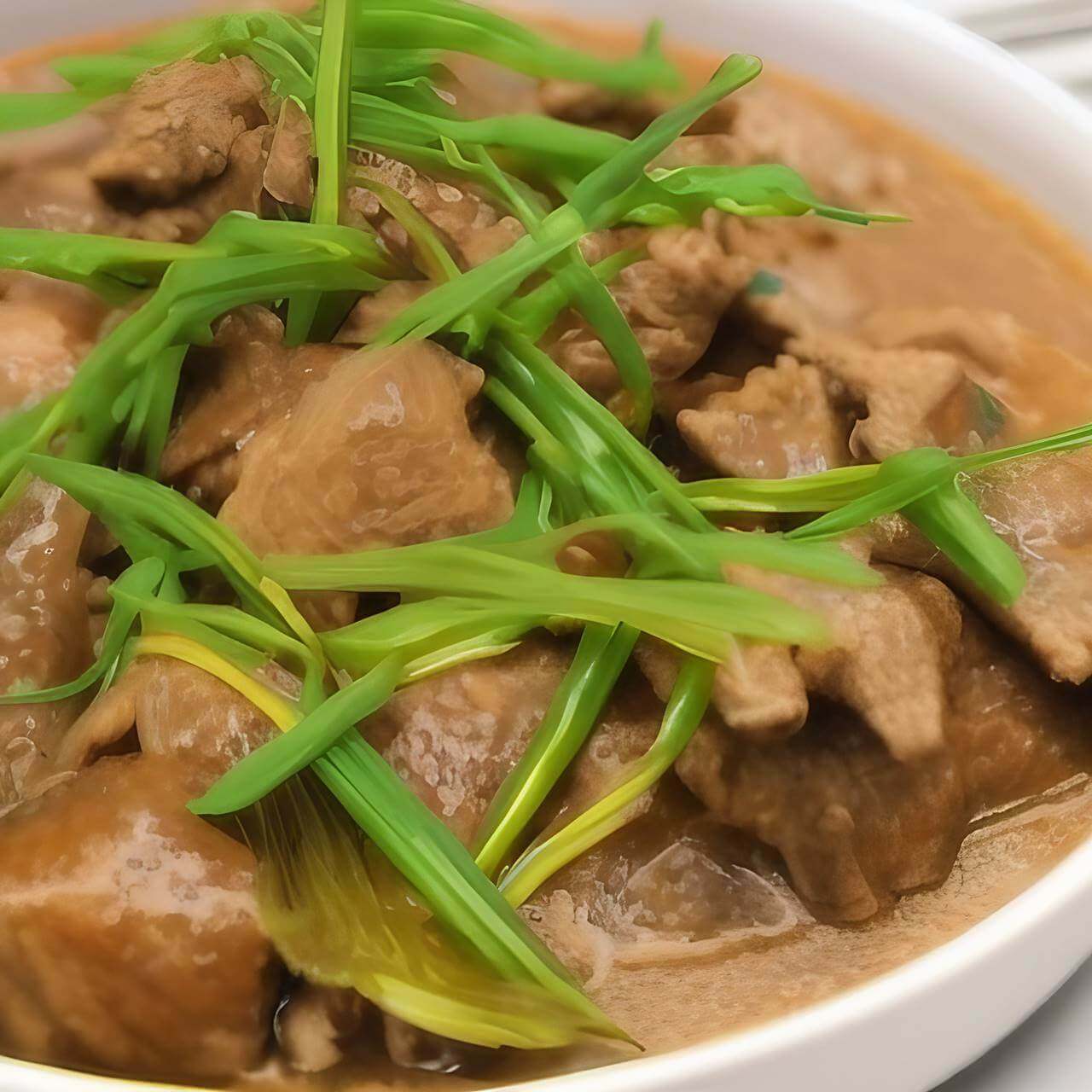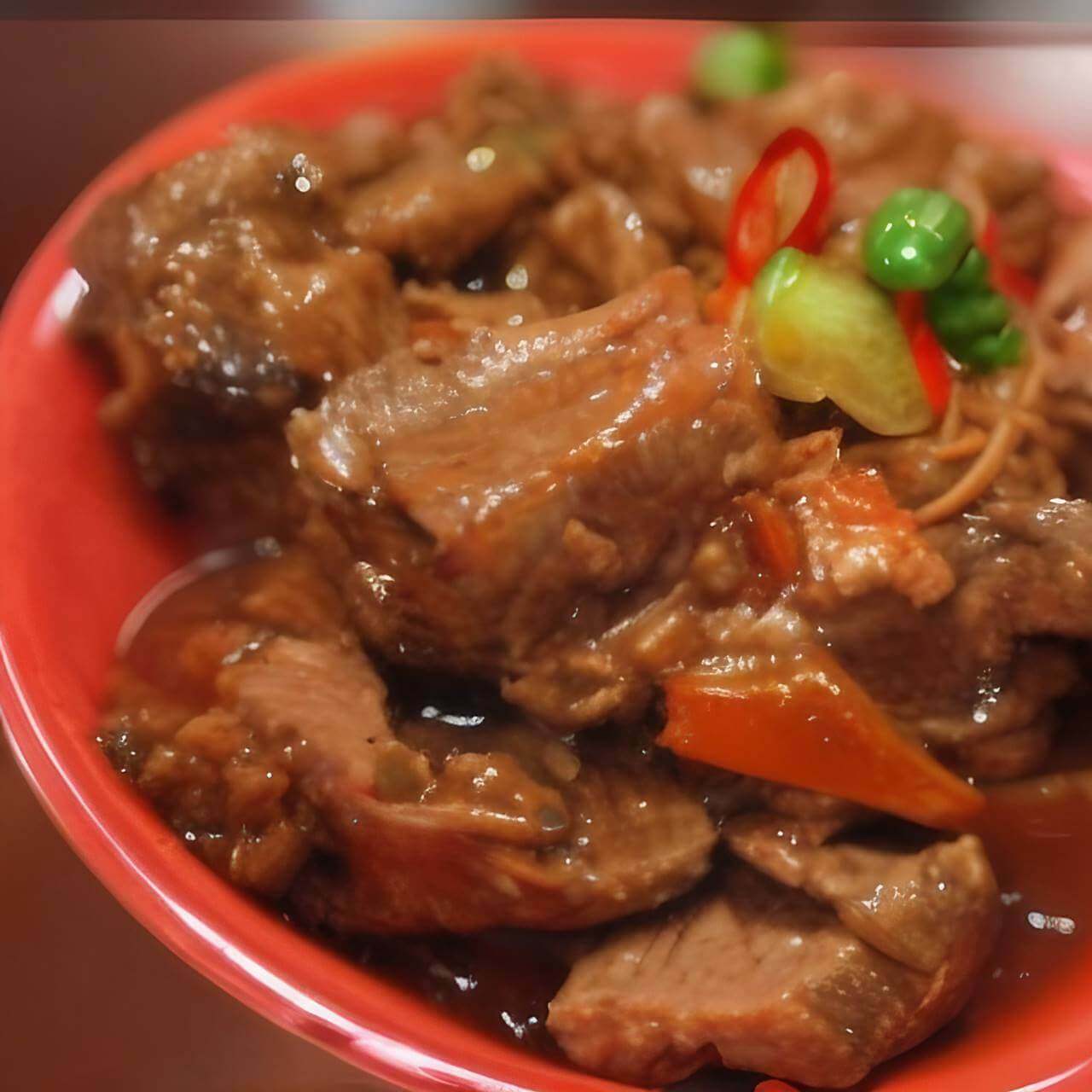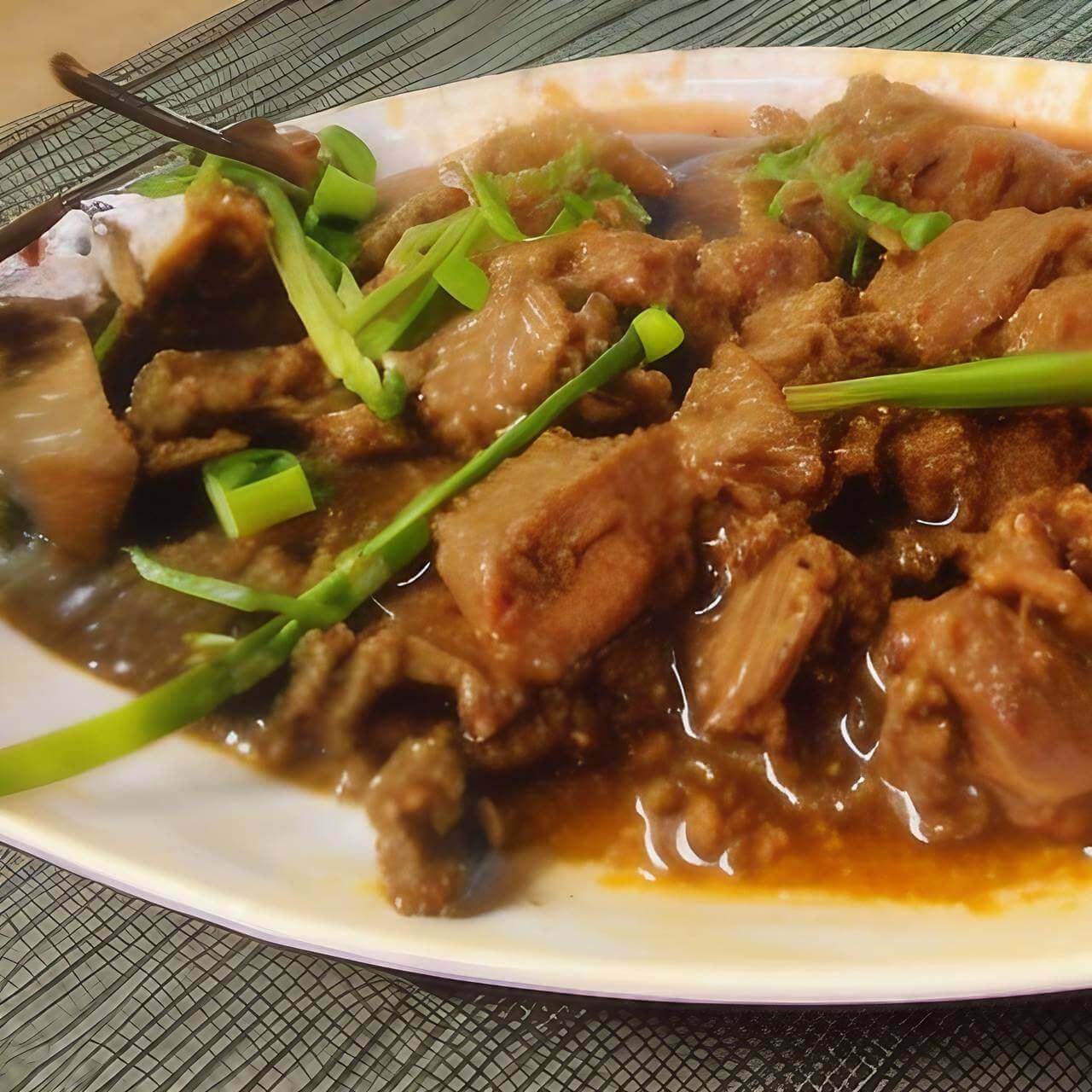For a delicious weeknight dinner that’s ready to savor in an hour, Binagoongan Baboy is the ideal choice. This classic Filipino pork dish consists of succulent pork belly simmered with tangy tomatoes, delectable shrimp paste and fiery chili peppers – guaranteeing robust flavor in every bite! Serve it up alongside steamed rice and delight your taste buds with authentic cuisine.
This traditional Filipino dish features vegetables or meat cooked in mouthwatering shrimp paste that is brimming with umami and savoriness. Popular all over the Philippines, this dish also has variations such as adding coconut milk or vinegar to enhance its flavor. Whether you use fresh bagoong alamang or pre-cooked bottled shrimp paste, one thing’s for sure – it’ll be delicious! Pork is usually the protein of choice for this dish, and in this recipe specifically, we are using pork belly.
Also Read: How to Cook Filipino Oxtail Kare Kare
To make it more exciting, I added eggplant – if you want to keep things classic though, simply omit the eggplant! For those who like a bit of spice with their food, feel free to add your preferred ingredients while making this basic binagoongan recipe! To increase the intensity of spice, feel free to add Thai chili pepper or siling labuyo. Alternatively, store-bought spicy shrimp paste can be used as well! By properly storing this dish in a jar and keeping it inside your refrigerator for up to two weeks, you’ll be able to enjoy these flavors for longer than usual.
Making binagoongan is incredibly easy; like various Filipino dishes, it begins by searing the aromatics. Start with garlic and onion, sautéing on low heat until golden brown. Follow this up by adding tomato for enhanced sweetness that brings out its flavor. As your onions start to soften, you’ll know it’s time to continue working on making this delectable dish!

Ingredients
- Cut 750g of pork belly into cubes
- 2 pieces tomato cubed
- Slice up one Chinese eggplant for a delicious dish (optional)
- 840 g pork stock
- 3 tbsp. white vinegar
- 4 tbsp. bagoong alamang
- 1 piece onion chopped
- 3 cloves garlic chopped
- 3 tsp. granulated white sugar
- 1 tsp. ground black pepper
- 3 tbsp. cooking oil
Steps to Cook Pork Binagoongan
- Gently heat oil in a large cooking pot to begin preparing your meal.
- Begin by slowly sautéing the onion, garlic, and tomato until the onions become soft. After that, add in your pork belly and cook it through to a light brown hue.
- Introduce the shrimp paste (bagoong alamang) into the pot. Constantly stir as you cook for 5 minutes.
- Gently pour vinegar into the mixture and let it come to a boil. Then, stir continuously for two minutes whilst cooking.
- Gently pour the pork stock into a pot and set it to boil. Lower the temperature to medium and let simmer for 40 minutes or until your meat arrives at its desired tenderness. Don’t forget: if needed, add more water or pork stock during cooking.
- Incorporate eggplant into the pot. Mix thoroughly and then cover with a lid. Allow simmering for 3 minutes until cooked through.
- Enhance the flavor of your dish with a pinch of sugar and freshly ground black pepper.
- Plate your dish and serve it to those around you. Share the goodness with them and bask in the pleasure of their enjoyment!
Tips
- Before you use your bagoong, make sure to sample it first. The saltiness may vary from one batch to another, so evaluating the taste will help you adjust for other ingredients accordingly.
- This recipe calls for pork belly cuts as they provide a tantalizing balance of succulent fat and tender meat, but you can also use other parts of the pig if that’s your preference. If that isn’t your style, feel free to get creative and substitute chicken or beef!
- Once you’ve incorporated the vinegar into your pork dish, don’t stir it any further. Let the concoction simmer until all of its acidity has been cooked off. The vinegary flavor will help to counteract and offset the saltiness of your shrimp paste!
- Cook the meat until it’s so tender that a fork can cut through with ease, and then add to your shrimp paste blend. The cooking time for this bagoong dish won’t take too long when you combine tomatoes with the shrimp paste–just make sure not to overcook as it will become overly salty!
- Spice up your meal by including red or green chilis in the mix. If you’re looking for a heartier and healthier dish, add some eggplants, carrots, string beans, or potatoes to make it truly irresistible!
- Enjoy the perfect blend of salty and umami-packed goodness with Pork Binagoongan, best served atop a steaming bowl of white rice. To add to this delicious experience, try pairing it with fried eggplant and okra as well as Ensaladang Mangga; a classic green mango salad comprised of chopped tomatoes and onions. For an extra kick of flavor, I suggest serving it alongside sliced green mangoes!
- Before adding additional sugar to your dish, sample the commercial sautéed shrimp paste to see if it is already sweetened.
- To achieve the desired flavor, sauté raw shrimp paste for 3-5 minutes or until its color has deepened. This will help bring out a unique and intense taste that is unlike any other. Finally, to keep your Binagoongan from becoming too salty, be sure to add the pork stock after you have incorporated the shrimp paste. Doing so will keep your dish’s flavor balanced and enjoyable.

Frequently Asked Questions
1. What other ingredients can I add to Pork Binagoongan?
You can try adding vegetables such as eggplants, carrots, string beans, or potatoes. You can also spice up the dish with red or green chilis. Finally, you may add sliced green mangoes for an extra kick of flavor.
2. Is it necessary to sauté the shrimp paste?
Yes, sautéing your shrimp paste is essential in order to achieve the desired flavor. Do this for 3-5 minutes or until its color has deepened.
3. Should I add pork stock before or after incorporating the shrimp paste?
It is important to add the pork stock after you have incorporated the shrimp paste. This will keep your dish’s flavor balanced and enjoyable.
4. What should I serve with Pork Binagoongan?
Enjoy this delicious dish with a steaming bowl of white rice! You may also pair it with fried eggplant and okra, as well as Ensaladang Mangga (green mango salad comprised of chopped tomatoes and onions).
5. How should I store leftover Pork Binagoongan?
Leftover pork binagoongan should be stored in an airtight container in the refrigerator. The dish will last up to 4 days. If you prefer, you can also freeze it for up to 6 months. Make sure to thaw it before serving.
Keep in mind that with each reheating, the flavor of your dish is sure to improve! To ensure that it lasts longer, though, I recommend omitting eggplant and tomato from the recipe; these ingredients tend to go bad quickly.
6. Can I use other types of meat in this recipe?
Yes, feel free to get creative and substitute chicken or beef! Just make sure to adjust the cooking time accordingly.
7. Is it necessary to add sugar in this recipe?
Before adding additional sugar, sample the commercial sautéed shrimp paste to see if it is already sweetened. If not, you can add a small amount of sugar to your liking.
8. How long will it take to cook Pork Binagoongan?
The cooking time for this bagoong dish won’t take too long when you combine tomatoes with the shrimp paste – just make sure not to overcook as it will become overly salty. Usually, it will take 30-40 minutes in total.

Summary
Pork Binagoongan is a tasty and easy-to-make dish that can be enjoyed with white rice or other accompaniments. It takes 30 to 40 minutes in total to cook this bagoong dish and it’s important not to overcook as it will become overly salty. To achieve the desired flavor, sauté raw shrimp paste for 3-5 minutes or until its color has deepened and add pork stock after incorporating the shrimp paste. You can also get creative by adding vegetables such as eggplants, carrots, string beans, or potatoes into your mix. Finally sample commercial sautéed shrimp paste before adding additional sugar if needed! Enjoy your meal!